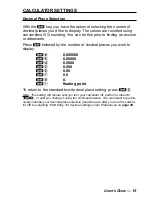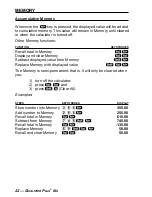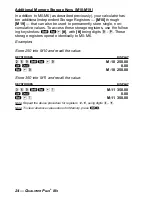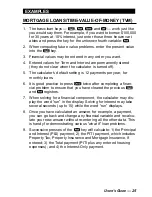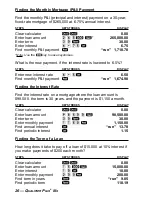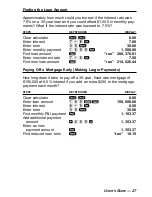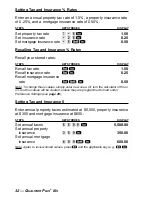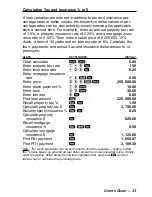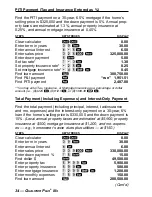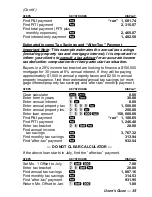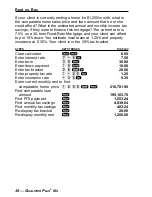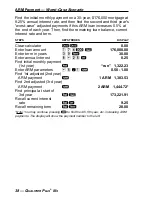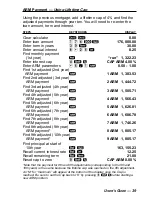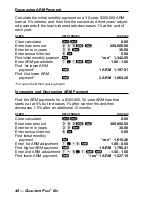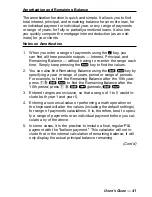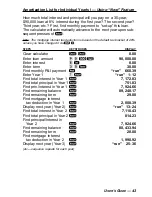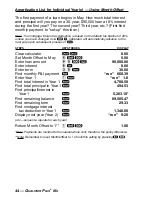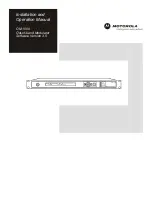
U
SER
’
S
G
UIDE
— 31
Taxes and Insurance
This calculator has keys that store your estimated local annual
Property Tax, Property Insurance, and Mortgage Insurance (if appli-
cable) rates or dollar figures. This allows you to calculate the PITI
(Principal, Interest, Tax, and Insurance) payment, in addition to the
regular P&I payment. You may also enter monthly expenses, such
as homeowner’s association dues—these are included in the calcu-
lation of the total payment (PITI plus expenses).
By default, the Property Tax and Insurance values are cleared when
the calculator is shut off, while the Mortgage Insurance value clears
when you press
o
twice. However, you may use the Preference
Settings (
s =
) to permanently store, or hold all Tax and Insurance
(% and $) values when the calculator is turned off (see page 20).
Note: There’s a separate Preference Setting for Mortgage Insurance.
Tax and Insurance can be entered as dollar amounts or percent-
ages. If entered as percentages, the Sales Price or Loan Amount
can be changed and tax and insurance will be recalculated automati-
cally. If entered as dollar amounts, however, they will need to be re-
entered for a change in Sales Price or Loan Amount to be correct.
Entering values 10 or less are assumed to be annual percentage
rates (you do not need to use the percent key).
—IMPORTANT— Property Tax and Property Insurance rates are
based on the Sales Price (therefore, a Down Payment or Sales
Price should be entered). The Mortgage Insurance rate is based
on the Loan Amount. If neither Sales Price nor Down Payment
has been entered, the Sales Price is defaulted to equal the Loan
Amount (basically assuming a 100% loan), in which case the
Tax and Insurance rates will be based on the Loan Amount
value entered.
Note: If you are underwriting a loan, many lenders choose to use loan amount
instead of price when figuring out Hazard Insurance. In this case, you will need to
turn your Hazard Insurance into a dollar amount: Loan Amount x Hazard Insurance
rate = Hazard Insurance dollar amount. By entering a lower amount into Insurance, it
will improve the Buying Power of your client. However, the client will only be covered
for the loan amount and not the complete value of the home.



